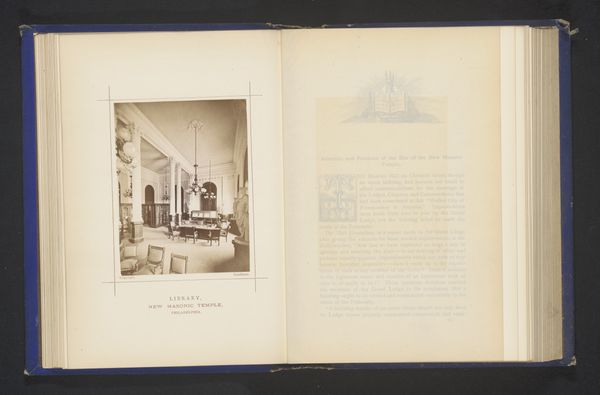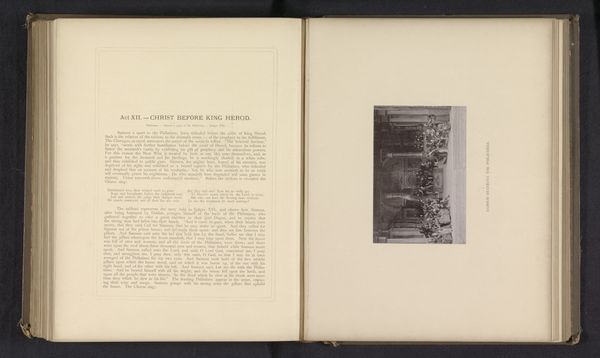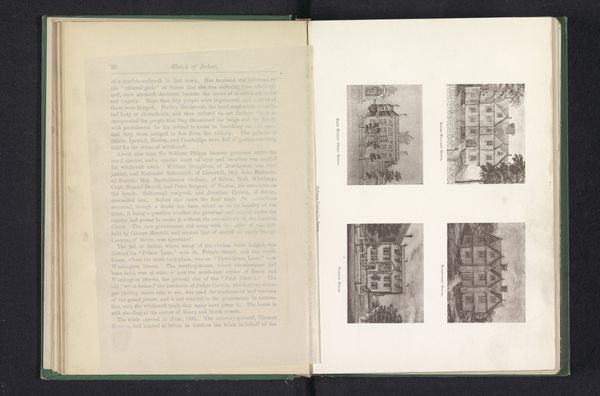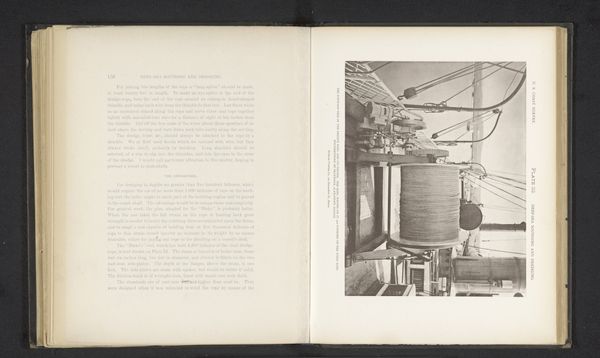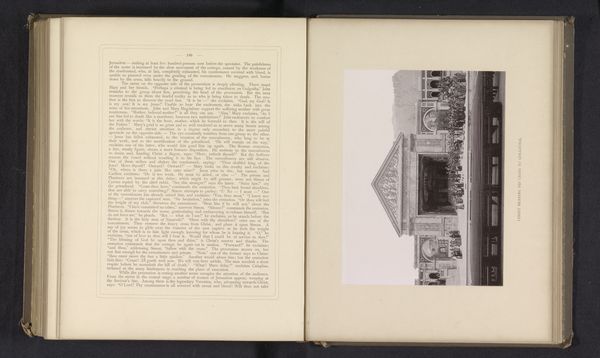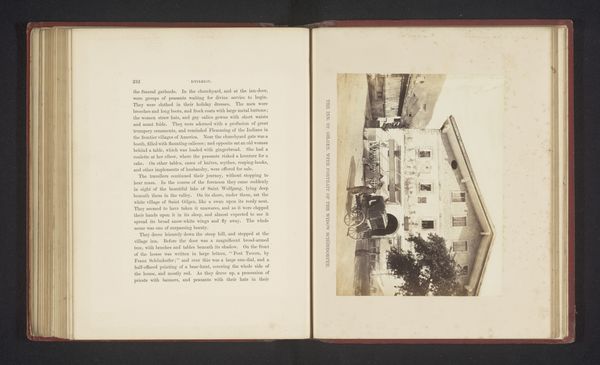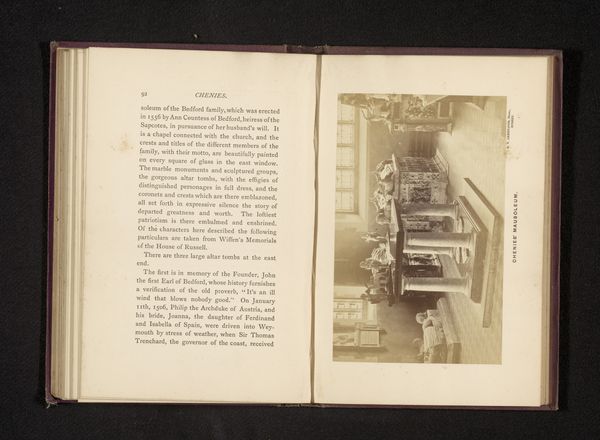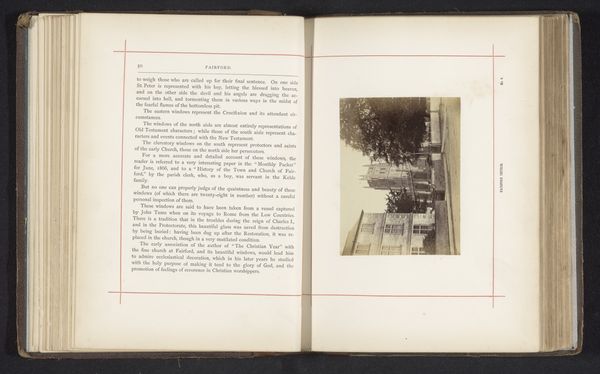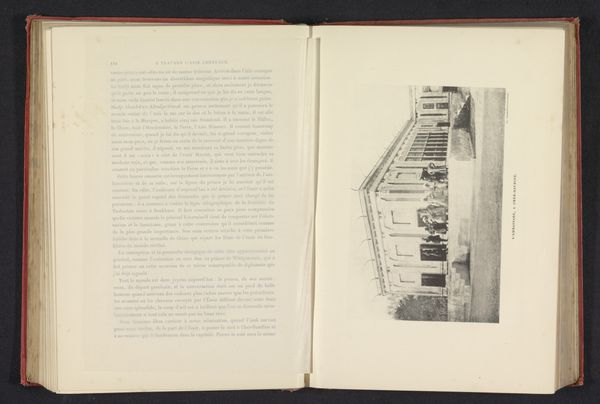
print, photography
# print
#
landscape
#
photography
#
academic-art
Dimensions: height 241 mm, width 165 mm
Copyright: Rijks Museum: Open Domain
Curator: This intriguing print, from 1879, offers a glimpse into the Peabody Academy of Science in Salem, Massachusetts. It's titled “Interieur van twee zalen van het Peabody Academy of Science in Salem,” offering views of two interior halls. Editor: There's an immediate feeling of reverence evoked by this photographic print. It's so still. The play of light and shadow seems carefully orchestrated. It has a calming yet oddly monumental tone. Curator: Notice how the composition emphasizes linear perspective, leading our eyes into the depth of each hall. This manipulation guides the gaze toward specific exhibits—tables displaying various objects, shelves teeming with what appear to be artifacts, all strategically positioned to facilitate the dissemination of knowledge. The composition gives the arrangement meaning. Editor: But consider the labour involved in gathering, categorizing, and displaying these artifacts. Think of the expeditions undertaken, the meticulous labeling, the crafting of display cases. These aren't just passively arranged items; they represent a significant material investment of time, resources, and skill. Curator: And yet the print itself serves as a symbol. Look at the formality, the order, the careful documentation. Doesn't it represent an embodiment of Enlightenment ideals? The drive to classify and understand the world around us reflected in these mirrored rooms. Editor: Sure, but how does that framework affect the interpretation of other cultures? What materials were valued over others, and why? I'm drawn to considering the exploitation and labour relations inherent in assembling this collection, given the global reach required to amass such objects. Curator: I concede your point about material sourcing. Yet within the composition, the rigid verticals and horizontals provide stability, order. I'm also captivated by the ethereal effect achieved with the tonal range. These create a visual space for intellectual contemplation. Editor: Ultimately, the creation and presentation of the print involves the use of a range of specific materials, each with its own story and ecological implication: the paper made from wood pulp, photographic chemicals and equipment, transportation—that adds layers to its understanding. Curator: A truly fascinating contrast in perspective—one emphasising how photographic language builds intellectual arguments; another examining the more challenging aspects of the institution behind the lens. Editor: Indeed. It underscores how seemingly objective displays often conceal intricate layers of social context.
Comments
No comments
Be the first to comment and join the conversation on the ultimate creative platform.


